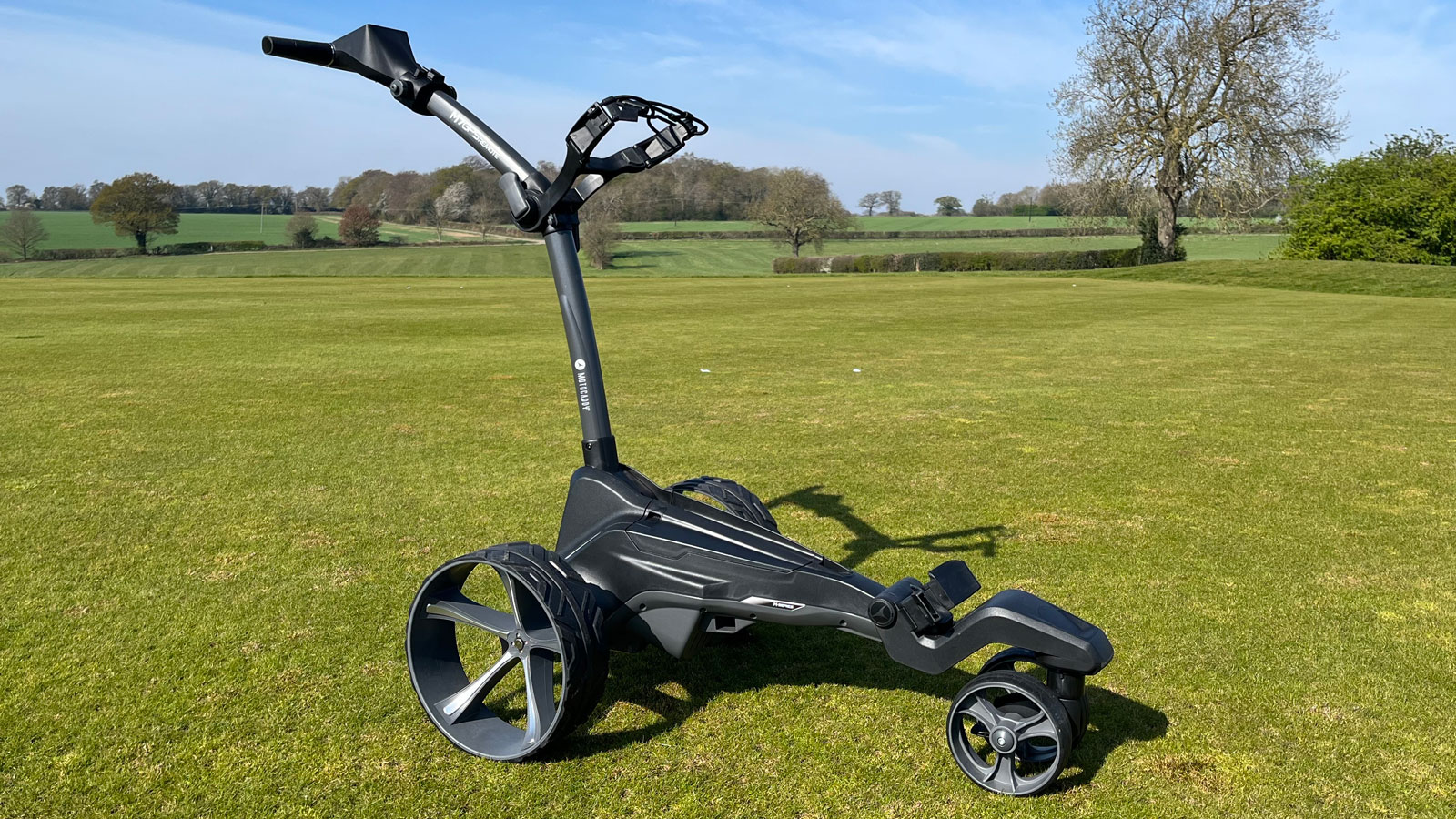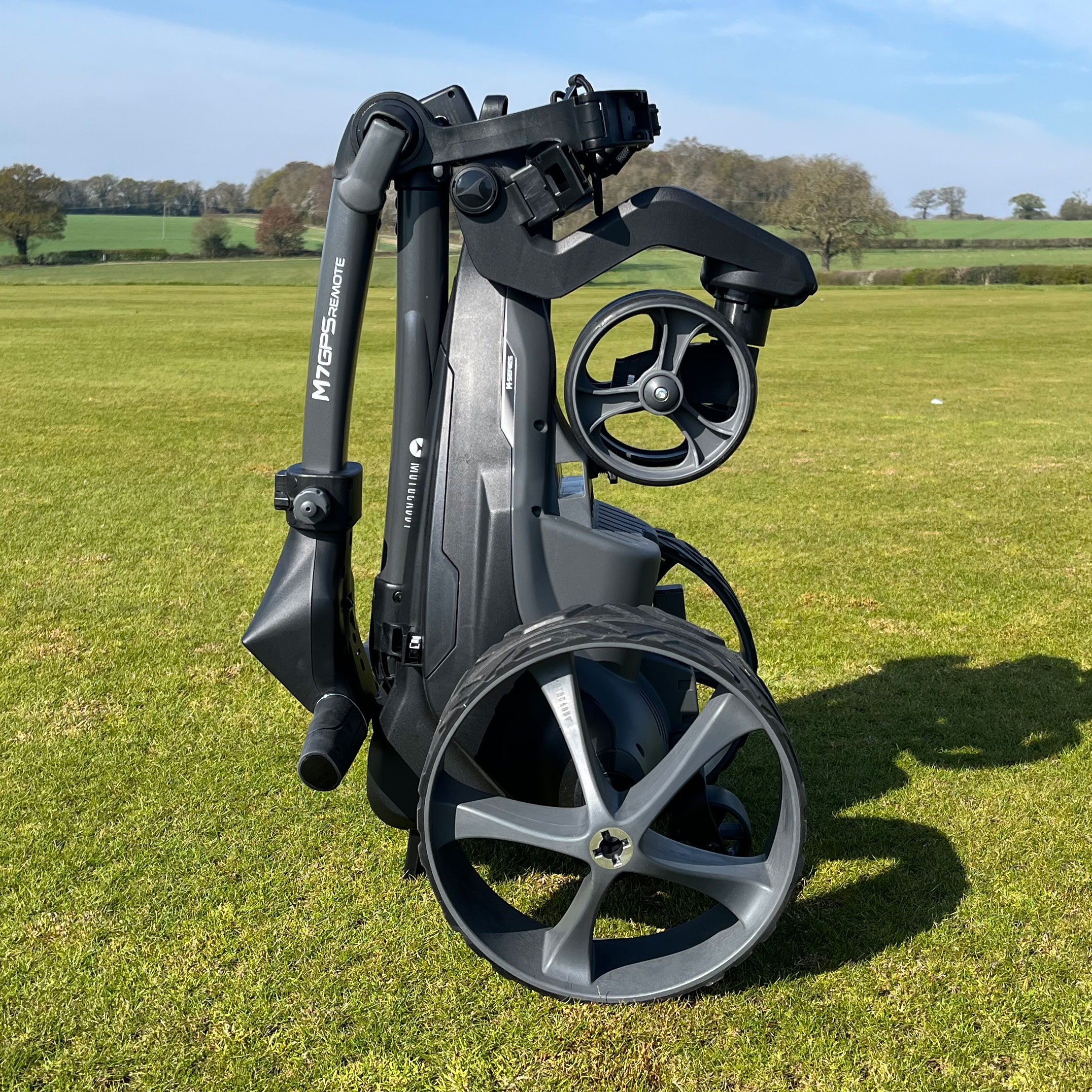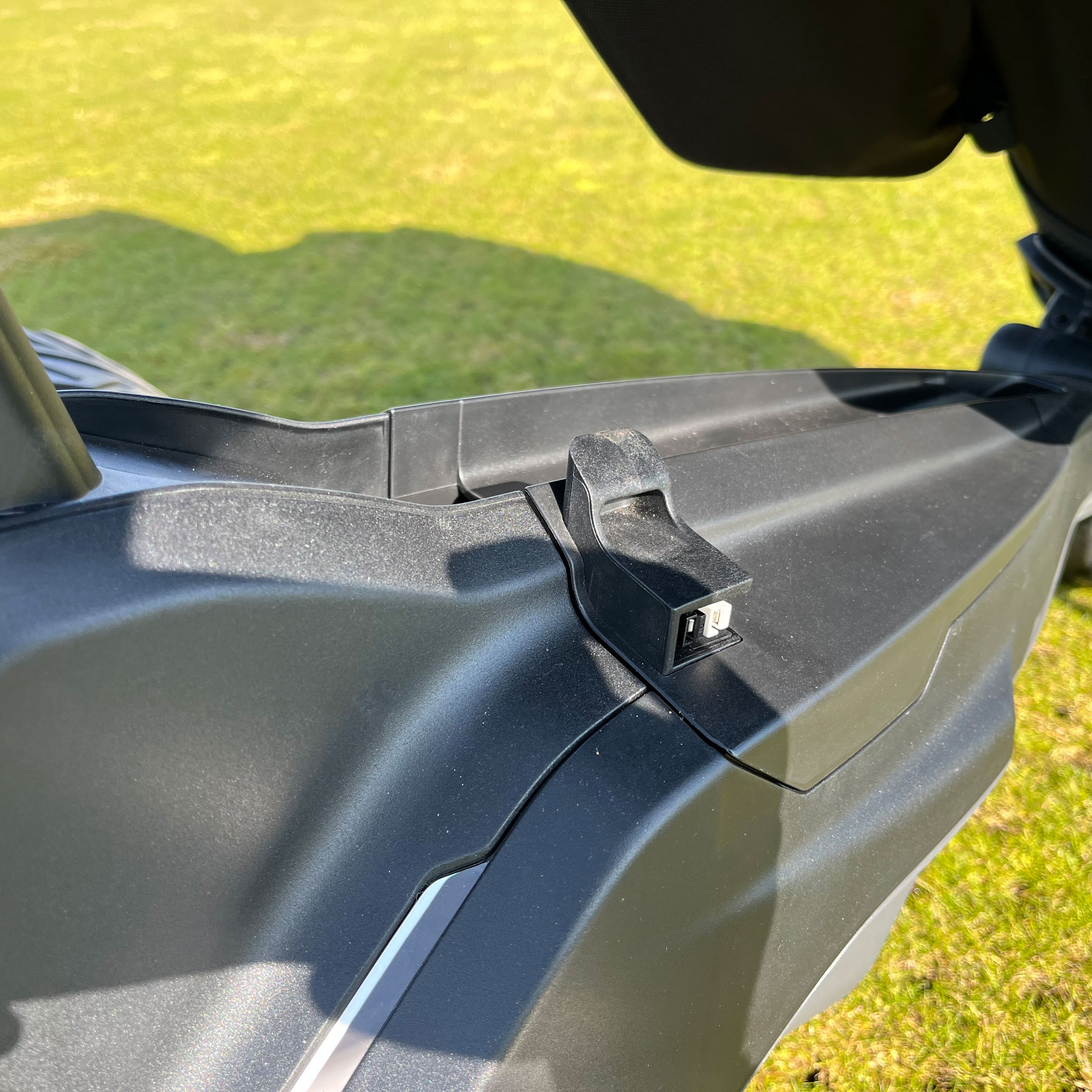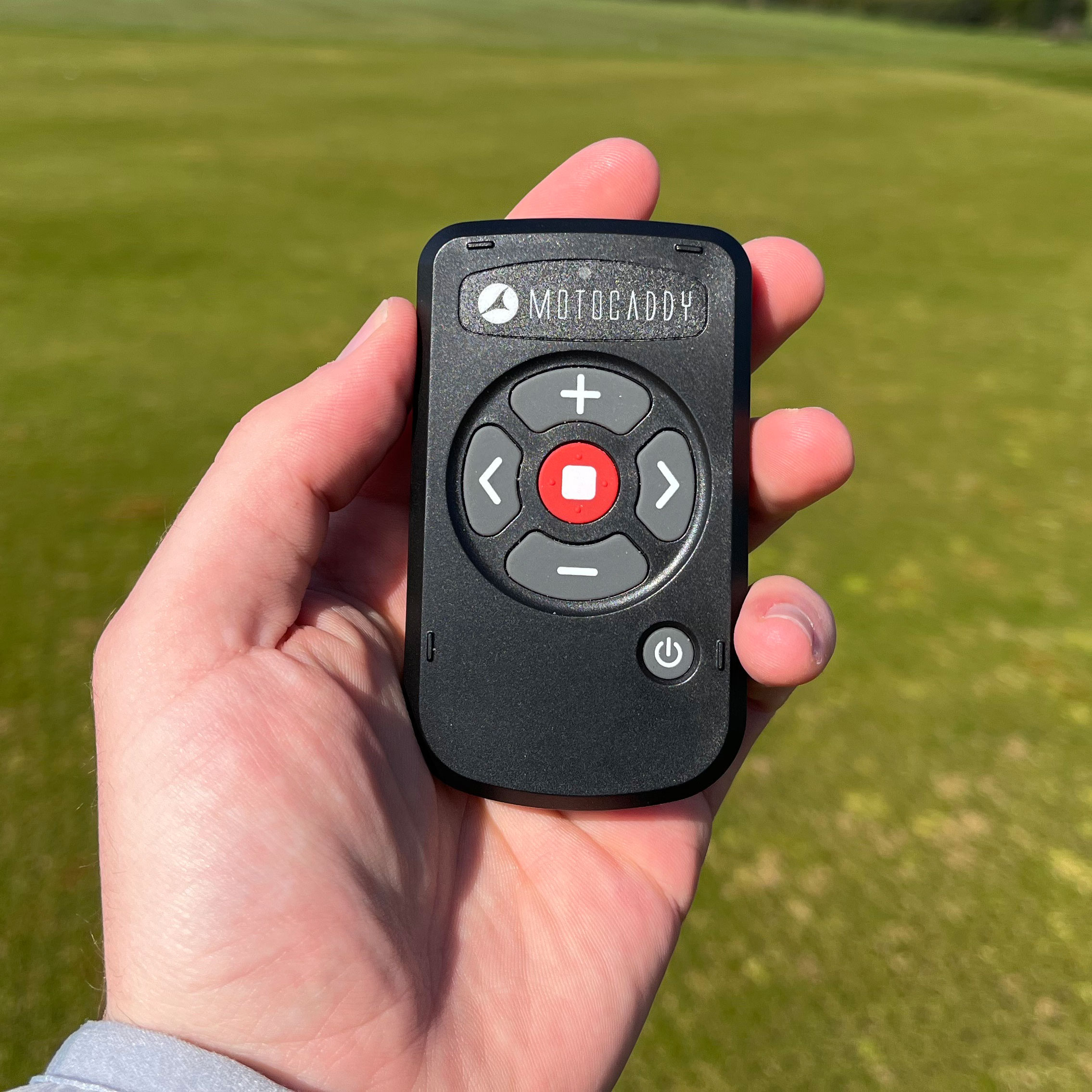
It was two years ago when I first tested the Motocaddy M7 GPS Remote trolley. Though I thought it was one of the best remote electric trolleys on the market, there were a few design tweaks I thought the brand could’ve made to make it an even more enjoyable experience. With the demand for remotre electric golf trolleys only going in one direction, Motocaddy has given its flagship remote trolley a series of upgrades to keep it at the very top of what is becoming a more crowded space. With PowaKaddy upgrading its GPS screens and the likes of Alphard and MGI making more budget-friendly remote golf trolleys, where does the new M7 GPS Remote sit amongst the class of 2025?
The most noticeable upgrade is the new cable-free battery housed in the middle of the chassis. One of my biggest criticisms of the 2023 model was that it still incorporated a battery with a cable, which felt very outdated even in 2023. It’s great to see that Motocaddy has addressed this issue, as it enhances the day-to-day user experience with the trolley significantly, in my opinion. The new battery autodisconnects when you fold the trolley down, revealing its charging port in the process. It means, in theory, you never have to remove the battery from the chassis. It’s the same technology I’ve tested in the 2025 Motocaddy S1, and it’s a superb design feature I think every golfer with appreciate while also standing out clearly versus the rest of the battery technology used on competitor models.

Speaking of folding, there has also been a slight tweak to the already excellent folding mechanism. It is ostensibly the same as the last version, with a two-step system that collapses the trolley to a surprisingly compact shape, but with an improvement to the anti-tip rear wheel. Previously, you had to take the whole rear wheel out and place it in the chassis when folded, whereas now you can easily retract it into the chassis itself. This is a much better way of integrating the anti-tip wheel, and one that saves a significant amount of time in the folding process. Despite the trolley's size and weight, it folds nicely and compactly, allowing it to fit in tighter spaces than you might imagine. That the rear wheels invert is another nice touch that saves a little more room when you're not using the trolley.
While there hasn't been an upgrade to the GPS software itself, Motocaddy has now removed the need to use a subscription service to access the full hole maps on the GPS. I always felt this was an unnecessary addition to those who had already paid the best part of £1500 for a trolley, so I’m glad to see it’s gone. It means that out of the box, you get the full power of the Motocaddy GPS, which gives you full hole mapping, yardages to the green and hazards, as well as the ability to track score as well as stats like fairways and greens hit.

I’ve always enjoyed using Motocaddy’s GPS. It’s accurate, the screen responds quickly to commands, and the detail on the full hole mapping is incredibly useful to help you plot your way up the hole. That being said, it's now hard to ignore the quality of the portrait GPS screen on the new PowaKaddy RX12 GPS. The 5-inch portrait touchscreen on the PowaKaddy has really put the cat amongst the pigeons when it comes to built-in GPS in trolleys, and it has left the Motocaddy screen feeling a little behind the times. That’s not to say the Motocaddy is a bad GPS, it’s just that the PowaKaddy has taken that technology up another notch in my opinion.
That being said, I much preferred the actual remote experience of the Motocaddy to the PowaKaddy. The PowaKaddy required quite a bit of correcting when it was on a side slope, but the Motocaddy was much more proficient on touch terrain and required much less input on the remote to keep it going where I wanted. I like how compact the Motocaddy remote is, too, and the trolley is incredibly responsive to commands, making it easy to use for remote trolley experts and novices alike. The Stewart Vertx Remote still beats both out from an out-and-out remote experience, but Motocaddy's is a close second place.


Other features include a USB charging port under the handle, new ergonomic handle grips and new tire tread. It's also worth noting that, unlike some remote trolleys like the Stewart Vertx or Alphard Cybercart, the M7 GPS can be used in either remote or manual mode via the dial on the handle. The trolley can be easily switched between both modes, with the press of either a button on the remote or the dial on the handle, seamlessly switching the trolley between modes.
Ultimately, the £1449 price tag might look like a lot, but this is the going rate for remote electric trolleys with GPS embedded. Being a Motocaddy product, every one of your £1449 feels well spent, and the quality of materials and overall build quality shines as brightly as ever. For those who don't feel they need the additional GPS, the M7 Remote without GPS comes in at £1249.
The 2025 update to the M7 GPS Remote has done a superb job of ironing out any small issues I had with the 2023 version and making for a complete remote trolley experience with one of the best embedded GPS systems on the market. While PowaKaddy's switch to portrait screens will no doubt keep Motocaddy engineers on their toes, the latest M7 GPS is Motocaddy's finest GPS remotre trolley to date.







